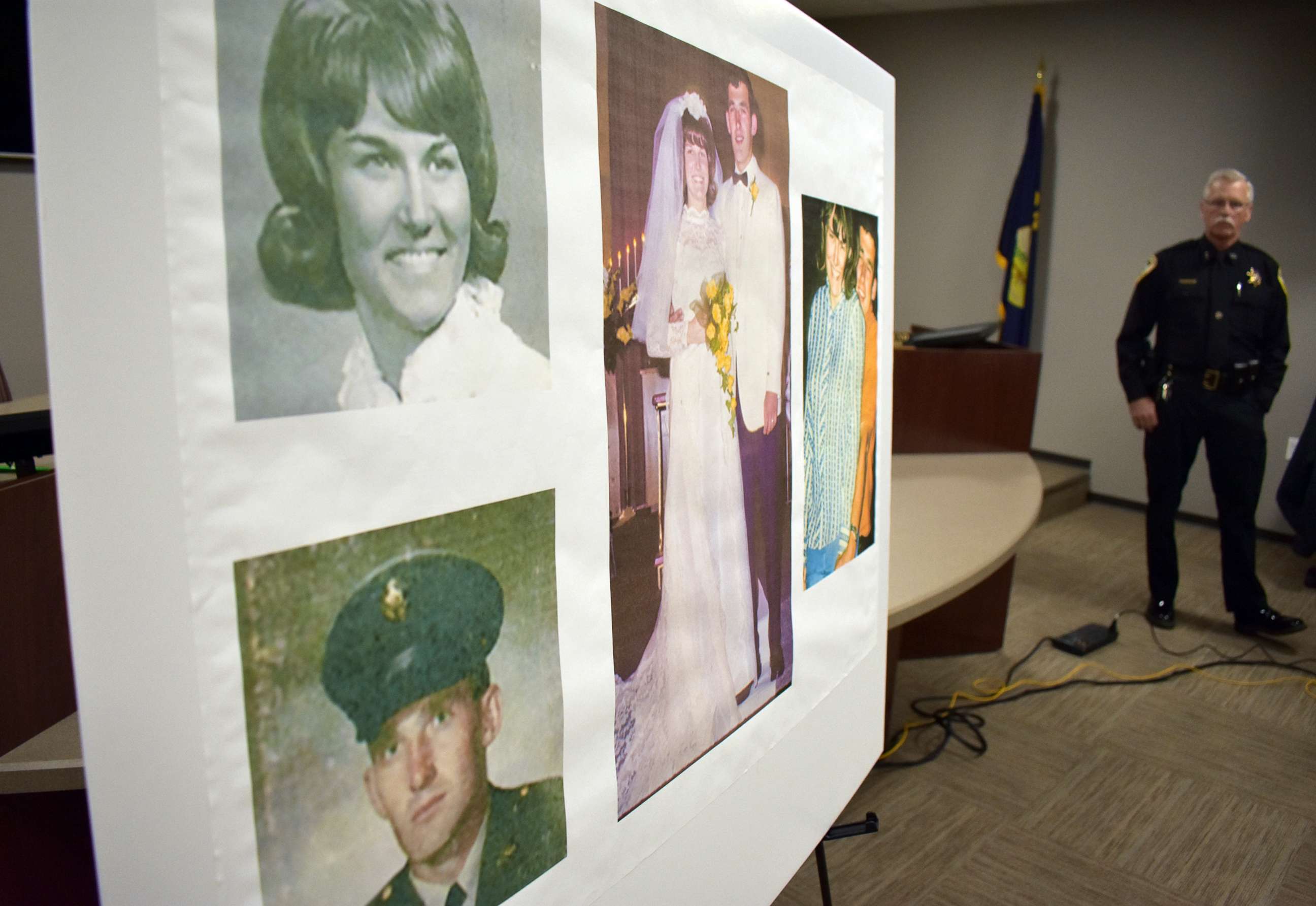Couple's 1973 Yellowstone County murder solved through genetic genealogy: Sheriff
Linda and Clifford Bernhardt were killed in their Montana home on Nov. 6, 1973.
More than four decades after a husband and wife were killed in their Montana home -- in what became Yellowstone County's oldest cold case -- a suspected murderer has been identified thorough DNA and genetic genealogy, a new technique that's helping crack cold cases across the country, officials said.
But the suspect -- a former co-worker with no criminal history -- is no longer around to face justice.
He died 16 years ago.
On the night of Nov. 6, 1973, Clifford Bernhardt and his wife Linda Bernhardt were murdered in their home, Yellowstone County Sheriff Mike Linder said at a news conference Monday. When Linda Bernhardt didn't show up for work the next day, her mother went to the house and found their bodies.

The victims, both 24, were "just a fine young couple. We could never find anyone who had a bad word about the Bernhardts," sheriff's office cold case unit coordinator Monty Wallis told ABC News.
The double murder went cold until 2004, when DNA was found on some of the evidence collected from the scene, Linder said.
Over many years, about 80 samples were collected from persons of interest, Wallis said. But none of the potential suspect samples matched the DNA left behind by the unknown killer at the crime scene, Fox said.
There's a lot of theories as to why and how. And I don't think we're ever going to know.
In 2015, the county hired Parabon, a company that provides DNA analysis for law enforcement, to help analyze evidence from the crime scene to predict characteristics of the suspect, Linder said. Parabon made a composite predicting the suspect's ethnicity, complexion, hair color and eye color, Linder said.
In August 2018, "our investigators received the initial genealogy report. Based on that report our detectives recommissioned Parabon to create further, in depth genealogical analysis," Linder said.
Then, on Jan. 3, 2019, through genealogy, Parabon analysts determined the suspect was one of two relatives, Linder said.
One of those two relatives had died, Linder said, and on Jan. 8 investigators obtained DNA from the living family member.
Later that month, further analysis positively eliminated the living family member as the suspected killer, Linder said.
We are so happy to finally be able to bring answers and resolution, maybe closure, for families and victims across the country.
Cecil Stan Caldwell -- a former co-worker of Linda Bernhardt's -- was identified as the only possible suspect, Linder said. Caldwel had moved to Billings, Montana, in 1964 and died in the city in 2003, Linder said.
That technique, known as genetic genealogy, takes the DNA an unknown killer left behind at a crime scene and identifies a suspect by tracing the family tree through his or her family members, who voluntarily submit their DNA to public genealogy databases.
This allows police to create a much larger family tree than using DNA submissions to law enforcement databases like CODIS, in which an exact match to the suspect is needed in most states, CeCe Moore, chief genetic genealogist with Parabon, told ABC News.
The first public arrest through genetic genealogy was the April 2018 identification of the suspected "Golden State Killer." Since then, genetic genealogy has helped identify more than 40 suspects in violent crimes, Moore said.
Caldwell had no criminal history and his DNA was not in CODIS, officials said.
Caldwell and Linda Bernhardt both worked at a grocery wholesaler in Billings -- Bernhardt in billing and secretarial work and Caldwell in the warehouse and meat department, Wallis said.
The two had contact on a regular basis, Walis said, though he did not elaborate on their contact.
Regarding a motive, "there's a lot of theories as to why and how," officials said Monday. "And I don't think we're ever going to know."
Linda Bernhardt was likely the target, officials added.
"Our team at Parabon have been deeply touched by this case," Moore said of the Bernhardt murders as she Skyped into the investigators' news conference Monday in Montana.
"We are so happy to finally be able to bring answers and resolution, maybe closure, for families and victims across the country using this new tool. And our hearts go out to Clifford and Linda's families," Moore said.
Wallis said genetic genealogy will become "the gold standard for solving cold cases across the country."
In Montana, where there are over 200 unsolved cases, "this is the key that can unlock the doors on many of those," Wallis told ABC News.
The Bernhardt family said it is "relieved for the degree of closure this information brings."
"We just learned of the developments in the case this morning," the family said in a statement read by Wallis at the news conference. "We've had little time to process and understand this information and we ask for privacy at this time."




